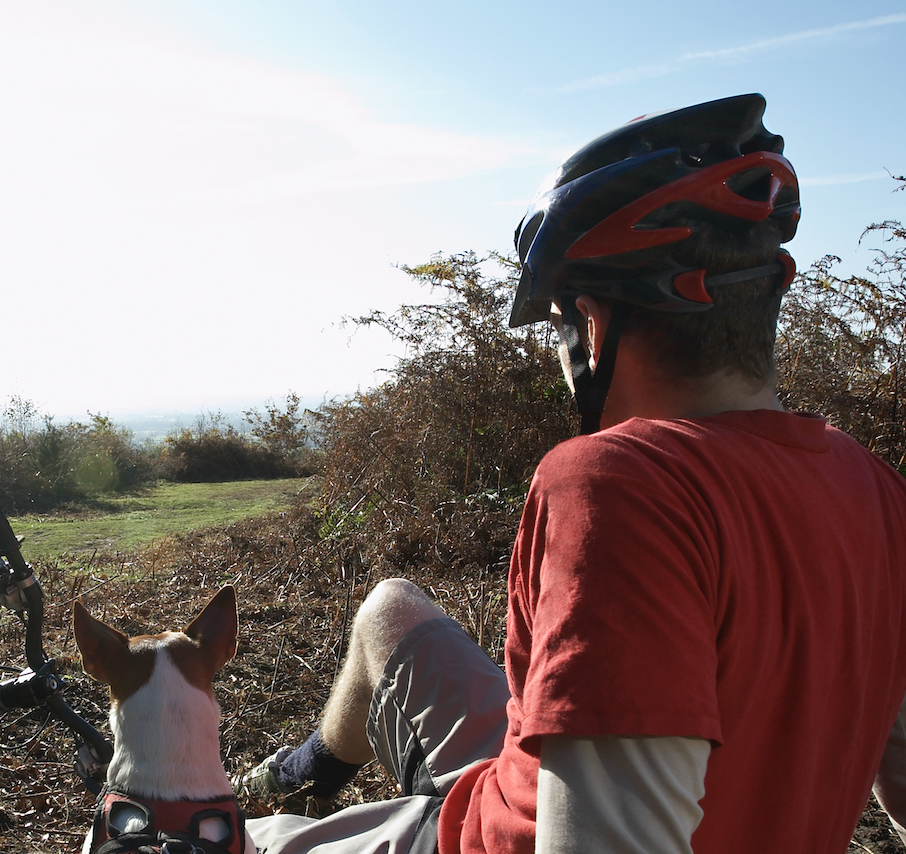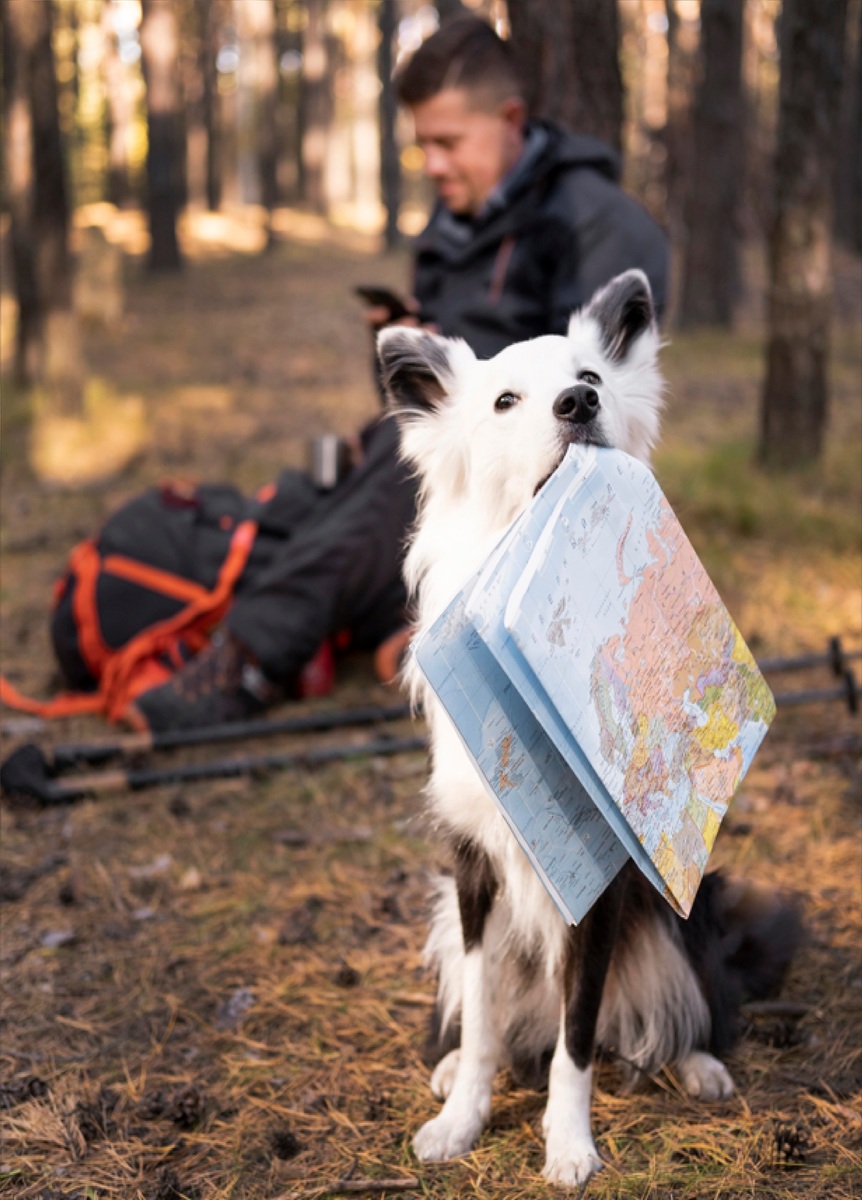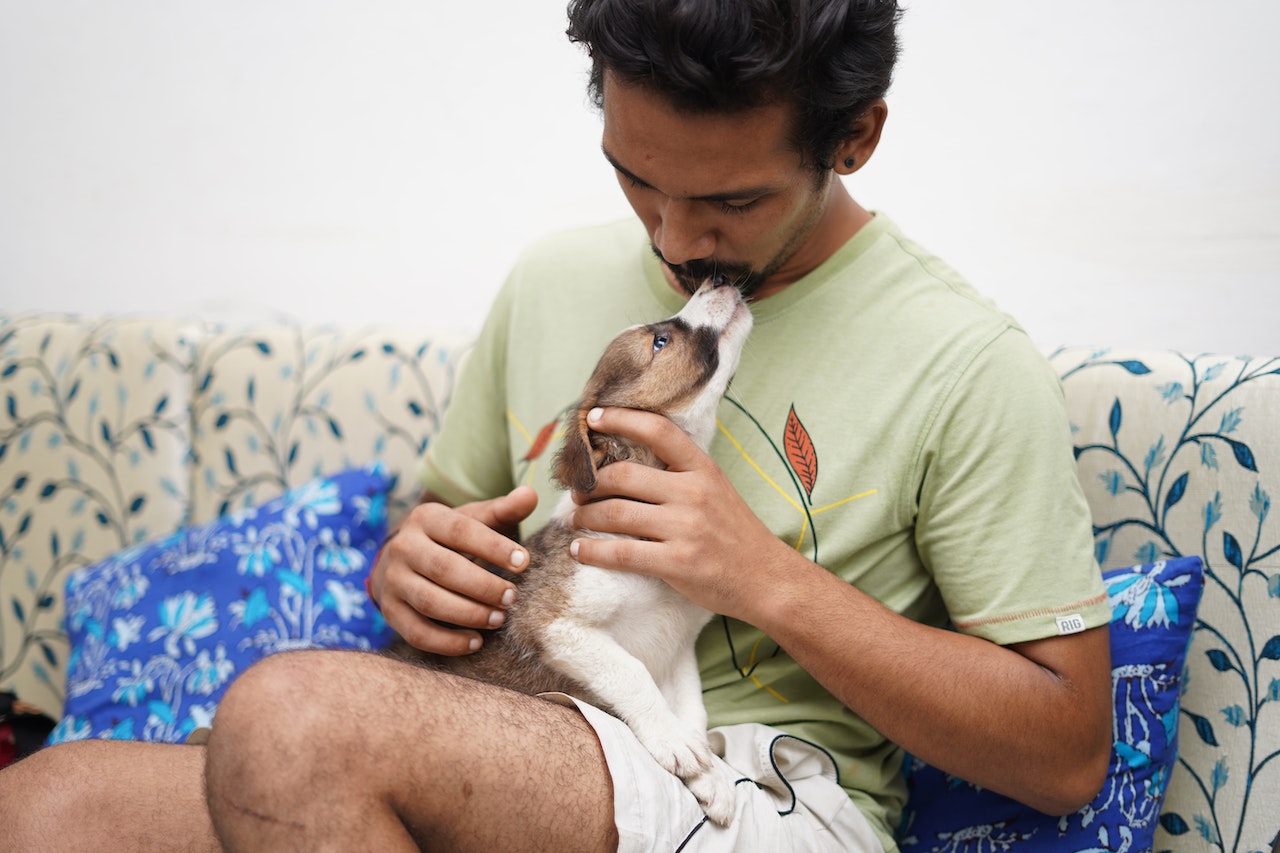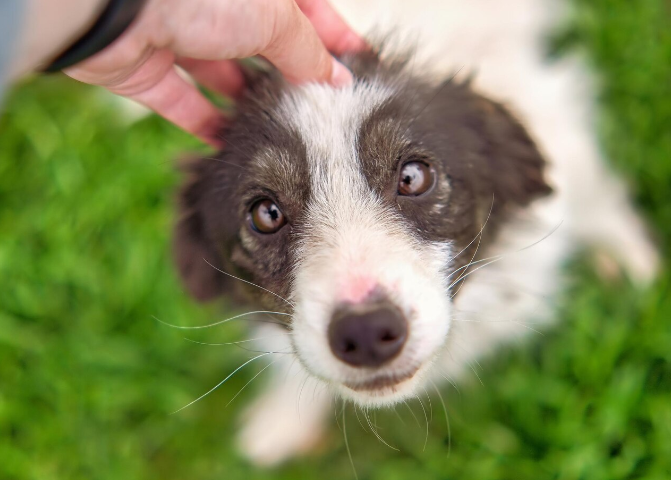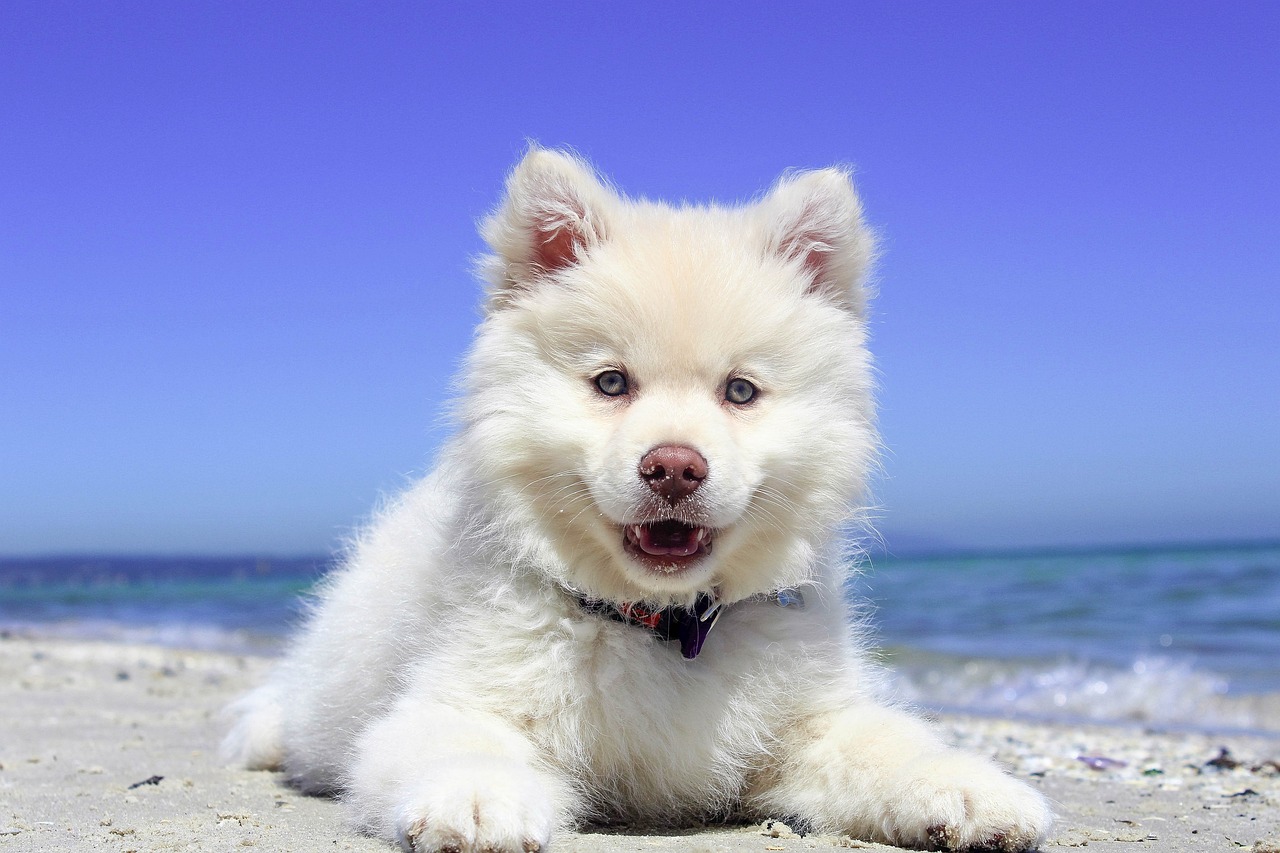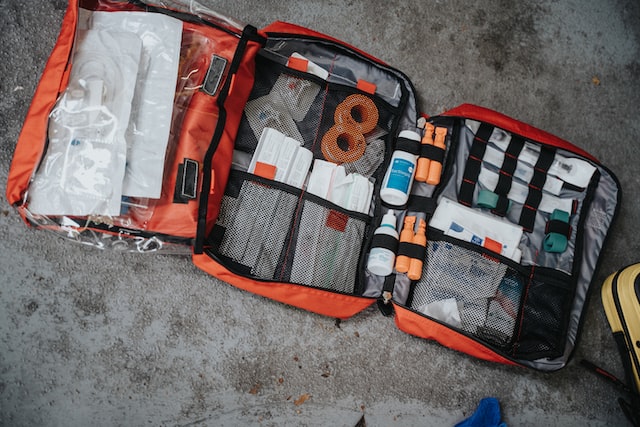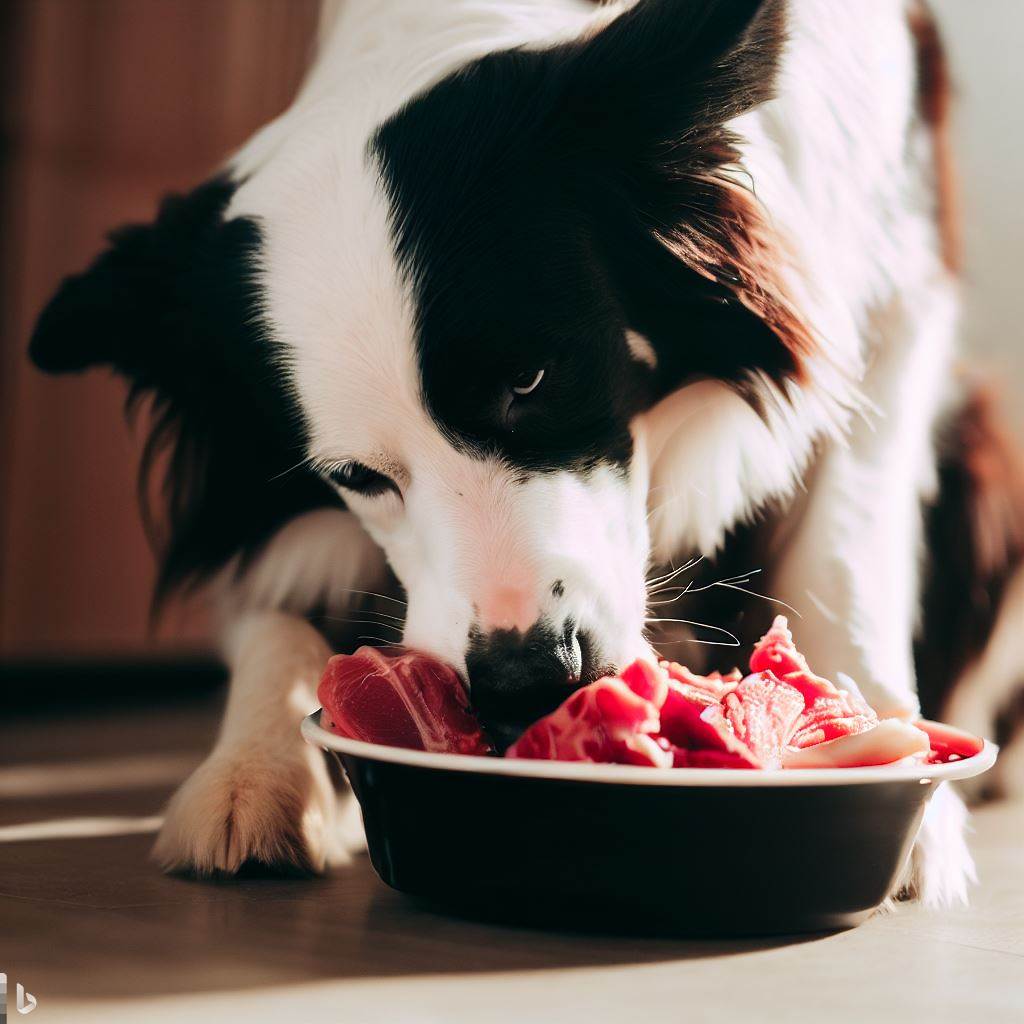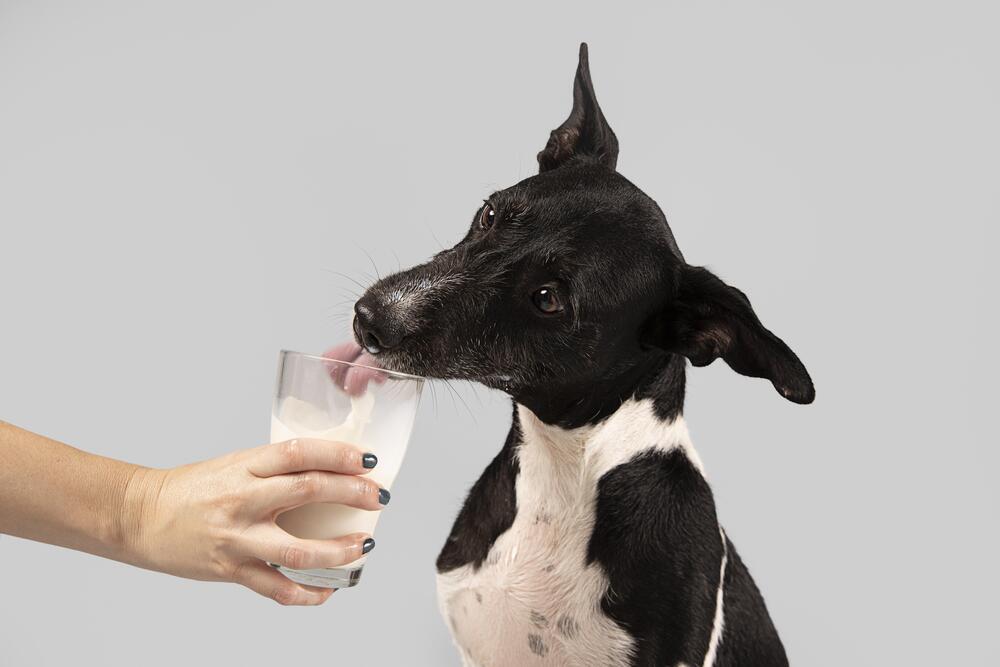- Key Takeaways
- Flying with Pets in the Cabin- General Guidelines
- Pet Carrier Requirements
- Maximum Pets Allowed per Flight
- Maximum Pets Allowed per Passenger
- Restrictions
- Regulations for Transporting Animals within Mexico
- Regulations for Transporting Animals Out of Mexico
- Regulations for Transporting Animals into Mexico
- Pets traveling to London
- Flying with Pets/ESAs and Service Dogs to the US
- Flying with Pets- Fees
- Does Aeromexico Accept Service Animals?
- What Types of Service Animals Does Aeromexico Accept?
- Flying with Service Dogs- General Guidelines
- Do Service Animals and Emotional Support Animals Fly At No Cost?
- Flying with Service Animals- Restrictions
- Flying with Service Animals to London (UK)
- Maximum Number of Service Animals per Passenger
- Flying with Emotional Support Animal- General Guidelines
- Restrictions for Flying with Emotional Support Animals
- What Animals Are Not Allowed As Emotional Support Animals?
- Emotional Support Animals Flying to London
- How To Get a Service Dog?
- Train Your Dog as a Service Dog Through Service Dog Training School International
- Frequently Asked Questions
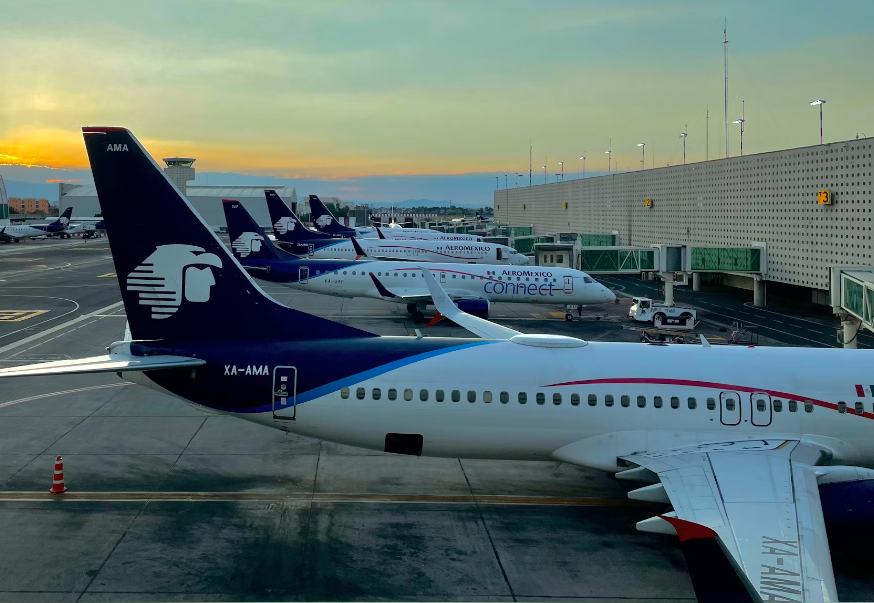
Traveling with our beloved paw friends can be a rewarding experience! However, it also requires careful planning and understanding of airline policies. This helps ensure both we and our paw family members have a positive experience.
Aeromexico is Mexico's flag carrier. It operates flights to more than 90 destinations not only in Mexico but also in North, South and Central America, the Caribbean, Europe, and Asia.
Today's article will provide an overview of Aeromexico's guidelines for flying with pets and service dogs, and help you properly prepare for your flight on the airline!
Key Takeaways
-
Does Aeromexico Accept Emotional Support Animal (ESAs)?
Yes, the airline accepts Emotional Support Animals, but only dogs and cats are permitted. Additionally, these animals must have a maximum weight of 26 lbs / 12 kg, and maximum dimensions of 22 inches in length and 12 inches in height.
-
Does Aeromexico Accept Service Dogs?
Aeromexico accepts service animals in the passenger cabin. Service animals are trained to perform specific tasks to assist a disabled individual.
Do Service Animals and Emotional Support Animals Fly at No Additional Cost?
Yes, according to the airline’s policy, both types of animals fly at no cost as they provide support to passengers. While service dogs perform specific tasks related to a disability, emotional support animals provide therapeutic support through affection and company.
-
How to Get a Service Dog?
Since service dogs do specific work for the benefit of an individual with a disability, they must undergo specialized training. If you already have a dog, our team at Service Dog Training School International will gladly assist you in training them properly!
-
How to Qualify for a Service Dog?
To qualify for a service dog, you must be diagnosed with a disability, that limits one or more major life activities.
-
How to Get Started?
Get started by taking the simple SDTSI online training assessment to see if you qualify, and enroll in the Service Dog Training Course that would be the best fit for you and your paw companion.
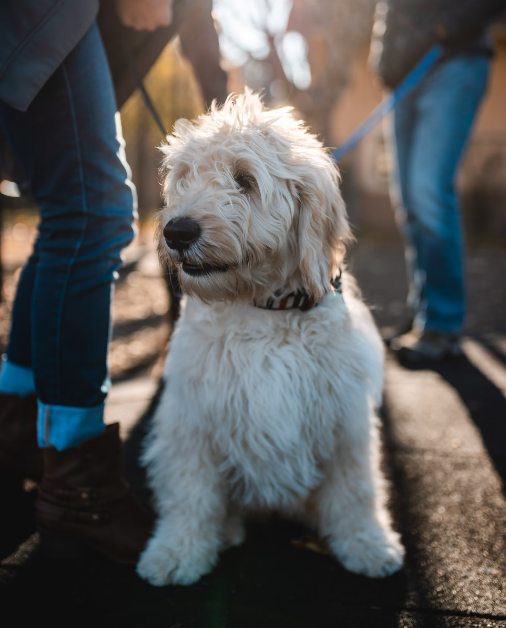
Flying with Pets in the Cabin- General Guidelines
Passengers who intend to bring a pet into the cabin need to familiarize themselves with the airline’s acceptance conditions first.
-
The airline accepts only dogs and cats in the customer cabin.
-
Passengers who plan to check in their pets, must arrive at the check-in counters 2 hours before their flight if they travel domestically and 3 hours before departure if they travel internationally.
-
The maximum allowable weight for pets, including the carrier, is 9 kg.
-
The airline only permits pets in window seats. They can not be placed in emergency exit rows or bulkhead seats.
-
Pets are required to be at least 6 months old to fly to the United States and 8 weeks old for all other itineraries.
-
The airline does not accept female pets with nursing offspring and animals that have not yet been weaned.
-
Pets under veterinary treatment will not be allowed and must be accompanied by a health certificate
-
To be transported, pets must fit comfortably in their flexible containers and be able to move freely.
-
The carrier must fit under the front-facing seat and must not exceed the under-seat dimensions.
-
The pet carrier needs to be leak-proof, provide good ventilation, and be made of a flexible material
The airline specifies that pets not meeting cabin travel requirements may be checked in to travel in the cargo hold, subject to service availability. They must comply with the necessary criteria or may be checked in through Aeromexico Cargo, following the applicable requirements.
Pet Carrier Requirements
The allowed pet carrier dimensions are as follows: 40 L x 30 W x 20 H cm / 16 L x 12 W x 8 H inches.
Also, pet carriers must:
-
Be made of flexible material / be soft-sided.
-
Have an inner base which is made of one-piece absorbent material.
-
Be well-ventilated.
-
Provide enough space for the pet to turn around and lie down comfortably.
-
Only one dog or cat is allowed per container.
-
The maximum allowed weight is 9 kg- the weight of the pet and the carrier together.
Maximum Pets Allowed per Flight
The maximum number of pets allowed per flight depends on the type of the plane and cabin class and may vary from 3 to 6.
You can find more detailed information on the airline’s website under the section “Acceptance Condition”.
Maximum Pets Allowed per Passenger
Aeromexico allows only one pet per passenger. However, this also includes emotional support animals (ESA) and service dogs. This means that passengers are not allowed to be accompanied by one service dog and one pet; one ESA and one pet; or one ESA and one service animal in the cabin.
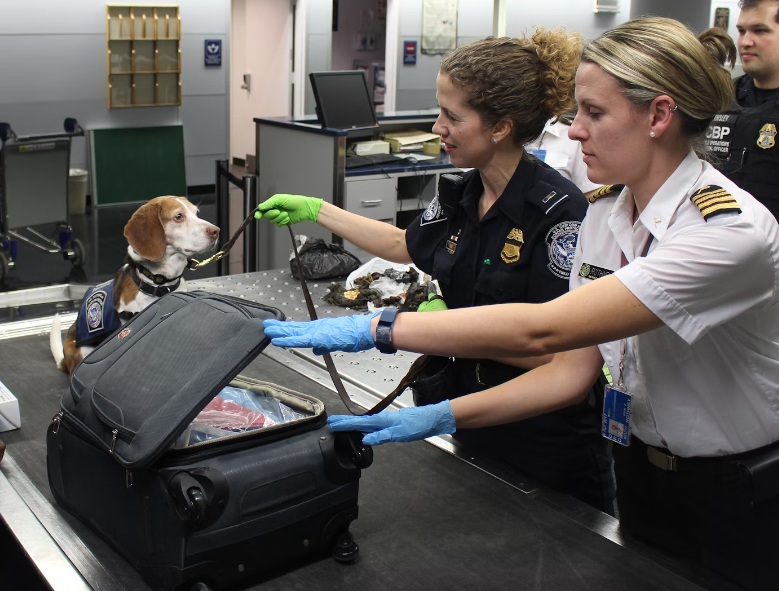
Restrictions
Boarding and Premier Lounges
Pets must remain in their carriers prior to boarding, when entering the aircraft, and throughout the duration of the flight. The container must display the Pet in the Cabin (PETC) label, which will be provided at the check-in counters.
The airline provides access to Salon Premier lounges as long as the pet stays in their container and the passenger is responsible for their care.
During the Flight
-
The cost of transporting the pet is the passenger’s responsibility.
-
Pets are required to fly on the same flight as their owners.
-
Passengers are prohibited from feeding their pets or giving them water onboard the aircraft.
-
Pets are not allowed to occupy seats designated for passengers under any circumstances, even if those seats are unoccupied.
-
When traveling with a pet, a window seat will be assigned to the passenger, except in emergency exit and bulkhead rows. However, the airline specifies that on Premier Class flights aboard the Embraer 190 aircraft, they allow only one pet in the cabin per flight, and an aisle seat will be assigned to the passenger.
-
Should cleaning be required on the aircraft due to the presence of a pet, the passenger will be responsible for this.
-
The airline provides items such as blankets and pillows solely for passengers.
-
In an emergency, oxygen will not be provided for pets.
-
If a passenger in a nearby seat is allergic to pets, a different seat may be assigned to the passenger with a pet.
-
If no alternate seating is available, the passenger flying with a pet will have their flight changed at no additional cost or penalty. However, the airline will not offer extra compensation for this change either.
-
Passengers are required to place their pet carriers under the seat, horizontally and facing the opposite direction.
-
The airline does not allow unaccompanied minors to fly with a pet in the cabin.
Please note that you will be allowed to fly with your pet in the cabin only on flights operated by Aeromexico. For any connecting flights, you will need to familiarize yourself with the pet travel requirements of the specific airline.
Aeromexico advises passengers traveling with pets to ensure there is enough time for their pet’s check-in during the connection.
Regulations for Transporting Animals within Mexico
-
Dogs and cats must be at least 8 weeks old to be accepted for transport.
-
Vaccination card- a valid rabies vaccination is required, including the date administered and its validity period, along with further details about the product (animals under 3 months are exempt).
-
An original and copy of a health certificate, valid for 5 days from the date of issue, must be provided. The certificate must be issued by a licensed veterinarian, and written on a letterhead, with their professional license number, and must include: the owner’s name and address, the animal’s breed, sex, age, and color, as well as the origin and destination addresses.
Regulations for Transporting Animals Out of Mexico
-
Dogs and cats must be at least 8 weeks to be accepted onboard.
-
Vaccination card- passenger must present an up-to-date rabies vaccination for their pet, showing the date of administration and product details (animals under 3 months are exempt).
-
For pets traveling to the United States, the rabies vaccine must be administered at least 28 days before arrival.
-
A health certificate, valid for 5 days from the date of issuance, must be presented in both original and copy. It has to be issued by a veterinarian, written on a letterhead, that includes the veterinarian’s license number. Additionally, it must include: the owner’s name and address, the animal’s breed, sex, age, and color, and the addresses of origin and destination.
-
SAGARPA - SENASICA Animal Health Export Certificate: it s required for most destinations (except flights to the U.S. and Canada). It must be issued by a licensed veterinarian on letterhead and include their license number.
Aeromexico strongly advises its passengers to review the specific requirements and conditions that apply to each route.
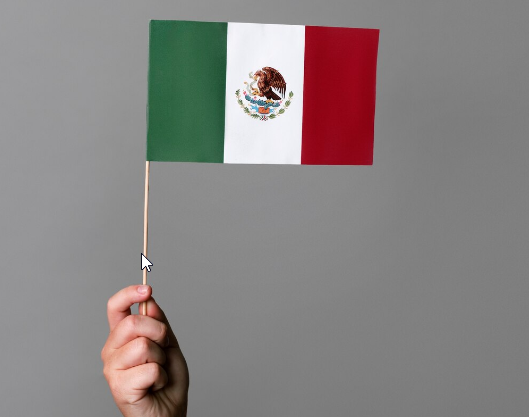
Regulations for Transporting Animals into Mexico
-
Vaccination card.
-
A health certificate issued by a veterinarian (original and copy), valid for up to 15 days from the issuance date, is required. It must be presented on letterhead with the veterinarian's license number and must also include the following information: the owner's name and address, the pet’s breed, sex, age, and color, and the addresses of origin and destination.
-
Pets must have been dewormed (internal and external) within six months before entry into Mexico, with the date and product name specified.
-
For pets returning to Mexico within 15 days of departure, the original health certificate (presented at departure) and rabies vaccination record will be accepted.
Additionally, passengers are responsible for reviewing and complying with the specific requirements of their destination country and consulting the relevant embassy or SAGARPA-SENASICA offices. They must ensure compliance with national and state regulations for the country's entry and exit.
Pets traveling to London
Pets are not permitted to travel in the passenger cabin to London.
If you want to learn more about regulations for flying with pets to/from other countries such as Columbia and Canada, please review the section “Documentation” on the airline’s website.
Flying with Pets/ESAs and Service Dogs to the US
Aeromexico recommends that its passengers to review the regulations and restrictions for traveling with dogs to the US.
Please note that on August 1, 2024, the CDC issued new regulations regarding travel with dogs to the United States. These regulations apply to both pet dogs and service animals.
When dogs enter the US from a low risk country, the following requirements have to be met:
• The dog must be at least 6 months old.
• The dog must appear healthy both prior to departure and during the flight.
• The dog must have a health certificate featuring their microchip number.
• The owner must submit documentation as proof of service dog training (valid for service dogs and ESAs).
• The owner must fill out and submit the CDC dog import form. The approval must be presented at the airport counter before the flight.
Please keep in mind that the CDC form must be completed in English.
Dogs who left the US vaccinated, traveled to a high-risk country and return to the US, have to meet the following requirements:
-
The dog must be at least 6 months old.
-
The dog must appear healthy before and during the flight.
-
The dog must have a microchip (provides the number in the CDC Dog Import Form).
-
The owner is required to submit the rabies vaccination certificate that is issued by a veterinarian in the US and endorsed by the USDA (United States Department of Agriculture) along with an export health certificate approved by them (valid until July 31, 2025).
-
The owner must complete and send the CDC Dog Import Form. The approval must be provided at the airport counter before departure.
Dogs, vaccinated outside the US and coming from a high-risk country, may not be transferred.
The airline points out that if the origin is a high-risk country, and there is a layover in Mexico, the dog will not be allowed to enter the US, even though Mexico is deemed a low-risk country.
You can review the countries considered high-risk on the CDC website.
Things you should keep in mind:
-
At least 3 hours prior to departure, passengers must visit the counter with an Aeromexico agent for document submission and review, along with the physical examination of the dog.
-
Passengers are responsible for checking and fulfilling the requirements set by the CDC for transporting dogs to the US. If there is no compliance with the regulations, the dog will be denied transportation and entry into the US.
-
If the CDC concludes that the dog fails to meet the established minimum requirements, it will the passenger’s responsibility to address the deficiencies and cover any costs resulting from this noncompliance.
-
When the CDC decides that the dog is not permitted to enter the US, the dog must be returned to the origin country.

Flying with Pets- Fees
The costs listed below apply to each flight segment.
For Domestic Flights
Low season
$1,350 MXN (Taxes included) ≈ $67.72 USD
High season
$1,700 MXN (Taxes included) ≈ $85.28 USD
For International Flights
Low Season
$162 USD EUR, GBP, CAD
High season
$168 USD EUR, GBP, CAD
Does Aeromexico Accept Service Animals?
Yes, the airline accepts service animals. These dogs must be trained to perform specific tasks or do specific work for a passenger with a disability.
What Types of Service Animals Does Aeromexico Accept?
Aeromexico accepts the following types of service dogs:
-
Guide dogs that assist passengers with diagnosed blindness;
-
Dogs who support passengers with hearing impairments;
-
Dogs trained to detect the onset of seizure episodes;
-
Dogs trained to support passengers with motor impairments.
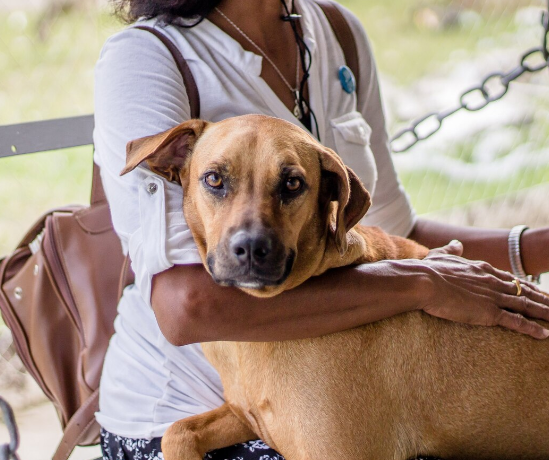
Flying with Service Dogs- General Guidelines
We strongly advise you to review the airline’s regulations for flying with service dogs as they help you better prepare for your flight.
-
Service animals (SVAN) are restricted to dogs only.
-
Guide dogs are required to wear a harness and an identification tag.
-
Acceptance of service animals will depend on their size.
-
Service animals need to be checked in at least 2 hours before departure.
-
Service animals must be a minimum of 8 weeks old.
-
Service animals are required to behave appropriately in public and follow their owner's commands.
-
Service animals are required to stay seated on the floor opposite their owner's seat for the duration of the flight.
-
There are no restrictions on the number of flight hours.
-
If needed, taking into account the passenger’s physical or motor abilities, the responsibility for cleaning the cabin due to the pet will fall on them.
-
In the rare event that the dog misbehaves, the airline may request details regarding their training as a service animal.
Do Service Animals and Emotional Support Animals Fly At No Cost?
Yes, there are no additional fees for this service.
Flying with Service Animals- Restrictions
-
Items such as blankets and pillows are designated solely for customer use.
-
Passengers flying with service dogs, have the right to occupy any available seat, given it is not at emergency exits.
-
For passengers flying with medium or large service animals, a seat opposite the bulkhead may be allocated at no additional cost.
-
The service animal must never be placed in the passenger's assigned seat, even if they are vacant.
-
Aeromexico does not have any specific weight limit for traveling with a service animal. If the animal is medium or large, the passenger will be reassigned to a seat opposite the bulkhead to avoid encroaching on the space of other passengers or the aisle.
-
If a nearby passenger has an allergy to dogs, an alternative seat may be offered. If no other seats are available, the flight of the customer traveling with the animal will be changed at no extra charge or penalty. No further compensation will be provided due to this change.
-
As already mentioned in the article above, one passenger can travel with one pet only, including emotional support animals and service animals. This means that a passenger cannot transport one service animal and one pet, one ESA and one pet, or one ESA and one service animal.
-
Food served on the plane is for passengers only.
Flying with Service Animals to London (UK)
Certain destinations, like the UK, have specific quarantine regulations for animals.
In these cases, passengers are required to obtain prior authorization and pay a processing fee to ensure their dogs' entry.
Aeromexico advises service dog handlers flying with their animals to London to contact the following reception center for assistance:
Contact Information:
City of London Animal Reception Center
Guildhall, PO Box 270, London EC2P 2EJ
Telephone: (0044) 208 745 7894
Maximum Number of Service Animals per Passenger
Only one service animal is allowed per passenger, except on flights to the US.

Flying with Emotional Support Animal- General Guidelines
-
The airline permits dogs and cats only as emotional support animals.
-
Pets must not exceed 26 lbs (12 kg) in weight and should measure no more than 22 inches in length and 12 inches in height.
-
The acceptance of these animals depends on their size.
-
All animals must be at least 8 weeks old.
-
Pets must be checked in at least 2 hours before departure.
-
The animal may be trained or untrained for specific tasks. However, ESAs must be trained to behave appropriately in public settings, similar to the requirements for service animals.
-
If necessary, the customer is entirely responsible for cleaning up after the animal while on the aircraft.
Restrictions for Flying with Emotional Support Animals
- Airlines such as Iberia (IB) and Air Europa (UX) do not permit emotional support animals (ESA) on connecting flights. Please keep in mind that if you begin your trip with Aeromexico and continue it with these airlines, your ESA will not be accepted.
- Emotional Support Animals must remain in the passenger's lap or under the seat in front of them for the duration of the flight, and should not obstruct other passengers' space or the aisle.
- Passengers are not allowed to feed or give liquids to their pets during the flight.
- Onboard food is strictly for passengers only.
- Emotional support animals are never permitted on seats, even if they are unoccupied.
- If a nearby passenger has allergies or similar concerns, an alternative seat may be offered to them. If no seats are available, the passenger with the emotional support animal will be rebooked on a different flight at no extra cost or penalty, although no compensation will be provided for this change.
- A pet carrier is not necessary for emotional support animals if they are properly trained and meet the same standards as service animals.
- Each passenger is allowed to carry one animal onboard, which includes emotional support animals (ESA) and service animals. This means a passenger cannot transport a service animal along with another pet in the cabin, or an ESA with another pet in the cabin, or an ESA with a service animal.
- Unaccompanied minors are not permitted to travel with emotional support animals (ESA) since they cannot be responsible for pets onboard.
What Animals Are Not Allowed As Emotional Support Animals?
Rodents and their variants (including mice, rats, hamsters, gerbils, reptiles, and guinea pigs) are not allowed to travel on the aircraft. Additionally, birds and small pocket pets like hedgehogs, rabbits, chinchillas, prairie dogs, and ferrets are also prohibited.
Emotional Support Animals Flying to London
The airline does not allow ESAs on flights to London.
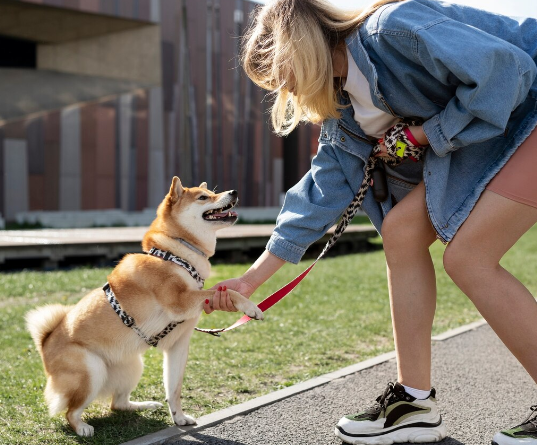
How To Get a Service Dog?
If you need a service dog, you have the following options available:
Getting a Fully Trained Service Dog
Many organizations and trainers focus on training service dogs, offering programs that include puppy training, basic obedience, and task-specific training. This process usually takes around two years and can cost between $30,000 and $40,000. These dogs come with the benefits of being evaluated beforehand, housebroken, and skilled in specialized tasks.
However, the high price and lack of involvement in the dog’s initial training can be downsides. Moreover, there are often long waiting periods, especially with non-profits, which can take from one to several years.
Training Your Dog Through an Organization or Trainer
A more budget-friendly option is to have your dog trained by a school or professional trainer. However, it can still be expensive. Prices often depend on the program’s duration, location, and reputation, typically ranging from $1,000 to $2,000.
This option allows more personal involvement through group or individual sessions. However, a disadvantage of this type of training is the limited attention in group classes and a set training schedule.
Owner/Self-Training a Service Dog
This approach has gained popularity among dog owners who are looking for assistance from their pets, as it is both flexible and cost-effective. It also provides an opportunity to bond with your dog. Structured, easy-to-follow training programs with full tutor support offer great opportunities to train your own pet dog regardless of your location and practice at your own pace.
However, this process demands time, effort, and patience. If you are committed and persistent, and your dog is healthy and has the right temperament, you may succeed in training!
Train Your Dog as a Service Dog Through Service Dog Training School International
If you think you will benefit from the assistance of your paw friend as a Service Dog, you are welcome to enroll in any of the programs we offer based on your needs.
Our service dog courses cover a variety of tasks designed to support you in your daily life, including basic and advanced obedience, specific service dog tasks tailored to the course, and proper behavior in public settings.
Retrieving objects, opening and closing doors, standing on two legs, pushing a cart, barking on command, alerting to sounds, and detecting allergens.
These tasks are included in our Intensive Service Dog Course.
Examples of other specific service dog tasks include:
Other tasks Deep Pressure Therapy, tactile stimulation (such as nose-nudging or giving a kiss), preventing emotional overload, managing crowds, interrupting repetitive behaviors, locating exits and leading you to safety, anxiety alerts, medication reminders, and item retrieval.
They are included in our Intensive Psychiatric Service Dog Course.
Our medical alert dog courses, on the other hand, are based on scent training. They aim to teach the dog to recognize and alert to their owner’s scent during medical episodes (such as diabetes, seizures, or cardiac issues).
To ensure you feel at ease during training, you will have access to a dedicated tutor and a team of trainers for assistance.
Upon completing the training, you will receive a certificate, and your dog will be registered with the school.
This documentation can be particularly useful when visiting public spaces or traveling with your service dog!
Frequently Asked Questions
Can you fly a checked-in pet on Aeromexico (AVIH)
Yes, the airline allows passengers to travel with checked-in pets. This service enables you to transport your pet in the aircraft hold as part of your checked baggage. The airline specifies that pets must travel on the same flight as their owners.
Passengers departing from Paris or Amsterdam and who want to travel with their pets, are required to make a request at least 72 hours before the scheduled departure. This can be done through the airline’s Call Center or at the airport.
What animals are allowed as a checked-in baggage?
The airline accepts only dogs, cats and birds as checked-in pets to travel in the luggage area.



